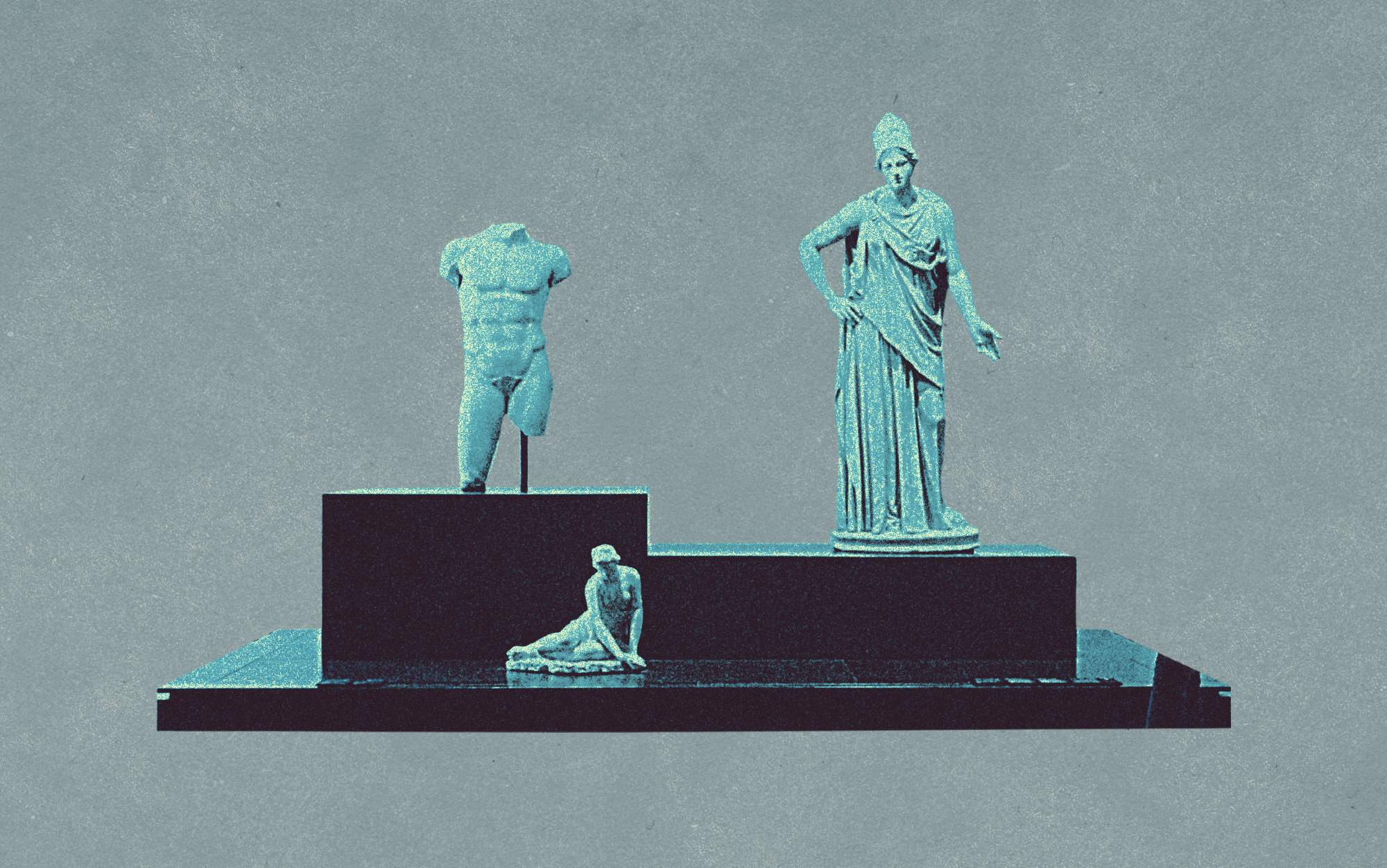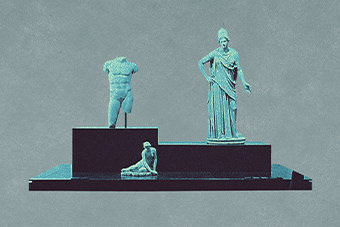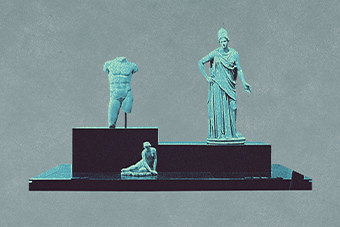Introduction
The Government Museum and Art Gallery is a pioneering institution nestled in the heart of the first planned city of modern India. It is one of the three museums designed by the great French architect Le Corbusier; the others being the Sanskar Kendra in Ahmedabad and the National Museum of Western Art in Tokyo. Conceived during the Second Five Year Plan and the National Education Policy as an interface for transmission of knowledge, it facilitates the promotion of art by providing a platform for artists to display their works and by helping to preserve unique cultural resources for the future generations.
History
The City of Chandigarh and the Government Museum and Art Gallery, both owe their existence to the partition of India. The political frenzy during the Partition necessitated the need for a new Capital for Punjab after the old Capital of Lahore went to Pakistan. Pandit Jawaharlal Nehru, the first prime minister of independent India, conceived a new Capital for Eastern Punjab in the foothills of the picturesque row of the Shivalik hills. The city was a vision for a resurgent India and resounded as a new town, symbolic of the freedom of India, unfettered by the traditions of the past. The geographical division between the two nations also meant a division in the cultural artefacts and artistic heritage. The collection in the Central Museum in Lahore was divided in the ratio of 40 to 60. The 40 per cent that India received consisted mainly of Gandhara sculptures and miniature paintings. This collection travelled many places but could not find a suitable home thus creating a need to erect a new space to house it. To that effect, French architect Le Corbusier, known as Picasso of western architecture for his modern designing, was hired as the chief architect of this ambitious project. Nehru’s modern vision and Corbusier’s utilitarian design culminated in the sculpting of various buildings in Chandigarh. Moving away from ostentatious frivolities of city planning, the model sought to emphasise efficiency and functionality. Everything from the pathways, to the grid-structure, was a product of deliberate design. The Government Museum and Art Gallery are symbolic of that vision; materialising sustainability for the cultural ethos of a democratic and egalitarian society deeply rooted in its history.
Layout Plan
The museum’s building is divided into three levels. The deputy curator’s office, museum shop, waiting area, reception, textile section, child art gallery, exhibition hall, reserve collection stores, conservation laboratory, and auditorium are all situated on the first level. Level two, accessible through ramps, unfolds into a wide space comprising of display spaces for sections on the Kushan-Gandhara sculptures, wall exhibits for Indian miniature paintings, stone, and metal sculpture cases, coins exhibit, and contemporary Indian art. The third level houses a well-equipped library, chairman’s room, and Gandhara sculptures’ reserve collection. The library boasts of more than 4,600 books on subjects of art, architecture, and history of art. To commemorate the contributions of the museum’s artistic custodian, Dr M.S. Randhawa, a special section containing archival records of his correspondence on the making of Chandigarh is established. This heritage museum shares campus space with two other museums, namely the Architecture Museum and the Natural History Museum. Near the museum entrance, a rentable auditorium is equipped with a seating capacity of 180 people.
Ambience
To provide a visual break from the concrete structure, the campus is lined with precisely planted rows of trees. To supplement the vast expanse and picturesque vista of its courtyard, contemporary sculptures are placed under the open sky for an environmental display. The uniquely pivoted entrance, massive metal panelled door, utilitarian furniture, and aesthetically designed display cases embody the style of architecture and interior design innate to Chandigarh. The museum’s unpainted concrete walls, massive pillars, and the chiaroscuro of light seeping through the sun breakers; enchant the viewer. Besides the architectural feast, the glamorous textiles and tapestries add to the charm of the museum. The display screens, showcases, and frames, designed by one of India's earliest women interior designer, Ratna Fabri, complement the aesthetics of the collection.
Collection
The museum shelters a permanent collection of fine exhibits from the Indian subcontinent. The collection of about 10,000 pieces, is divided into nine sections: Gandhara sculpture, Ancient Indian sculpture, Textiles, Indian Miniature Painting, Medieval Indian Sculpture, Metal Sculpture, Epigraphy and Numismatics, Decorative Art, and Contemporary Indian Art. The Museum boasts of one of the largest collections of Gandhara sculptures. In addition to the collection received from the Central Museum Lahore, the Chief Commissioner of Chandigarh and Dr M.S. Randhawa donated Pahari miniature paintings, modern and contemporary Indian art to the collections. Many sculptures bear identification plates in brail thus facilitating the artistic pleasure to visually-impaired visitors.
Highlights
Starting with the Jain statue of Padmavati, the noteworthy exhibits include sculptures of the mythical demoness Hariti (2nd century AD) in schist stone, the Sikandar Nama Rumal shawl embroidered with super fine rafu stitch (1852), 10 decorated Laur Chanda poem folios in poetic style (16th century AD), the depiction of Gita Govinda poem by Jaidev rendered in gouache on paper set (1730), and the elaborately carved Nepalese wooden statue of the Buddhist God, Manjushri (15th-16th century AD).
Museum’s Stories
A tank outside a museum? Tourists often wonder why a tank symbolising violence and war is placed just outside the museum. In fact, the tank symbolises the bottle-neck in the making of the museum when a war was fought with China in 1962. To provide funding for the security of the country, expenditures on all the construction activities including this museum were halted. The favourable outcome in the Indo-Pak war in 1965 boosted the morale of the nation, and funds were reallocated towards construction activities.
Lost and found: Just two years after the inauguration of the Museum, about 102 miniature paintings were stolen. To the amazement of the museum officials, 43 of the paintings came back through an anonymous parcel on May 10, 1972, later traced to Lucknow. Since that incident, on the 15th day of every month, a prasad (devotional offering) is prepared to appease the Gods and avoid any mishaps in the future.
Cow urine as the golden ingredient: The yellow colour used in the miniature paintings owes its luminescence to cow urine. Cows were solely fed mango leaves so that their urine with the yellow hue could be collected, dried, and made into a vibrant dye.
More Information
Getting there
The nearest Bus Terminal is in Sector 17. The railway station is located between Chandigarh and Panchkula with one side of the railway station connected to Panchkula and the other to Chandigarh. The Chandigarh Airport is located in Mohali. The Museum can be reached via an auto rickshaw, taxi (Uber, Ola etc.) or a local bus.
Average duration of visit
3-4 hours
Museum administered by
Chandigarh Administration
Updated
Quick Facts
Address:
Museum Complex, Sector 10
Visiting Time:
Sunday: 10 am - 4.30 pm
Monday: Closed
Tuesday: 10 am - 4.30 pm
Wednesday: 10 am - 4.30 pm
Thursday: 10 am - 4.30 pm
Friday: 10 am - 4.30 pm
Saturday:10 am - 4.30 pm
The Museum remains closed on public holidays.
Phone:
1722740261Email:
Entry Fees:
INR 10 per person entry fee and
INR 5 per person camera fee.
Free entry for kids below age 12, school groups below 10th standard, and senior citizens.




